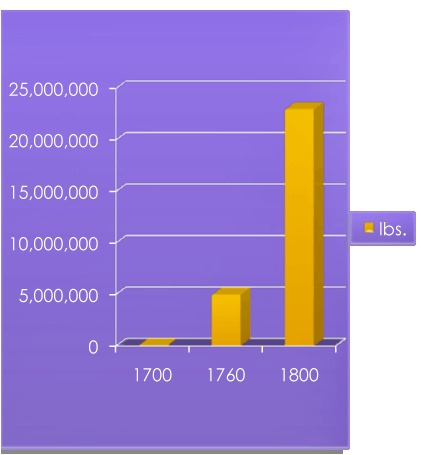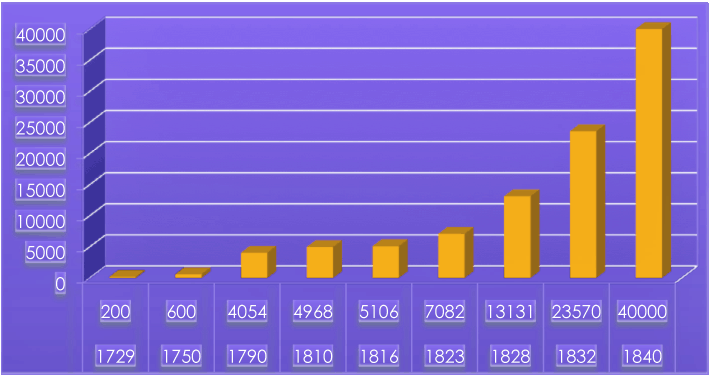
Why had the Tokugawa political system remained stable for 200 years?
How did economic changes undermine this stable system by the 1800s?
Ideology
Limited domains to 1 castle
Villages self-regulating
*“Alternate attendance”
*“Seclusion”
Controlled access to world
200 years of changes
Market economy
Population triples (30 million in 1800)
Urban population doubles (15-20% in 1800)
Peasant protest
Growing disparities in land and wealth
Violence against merchants and rich villagers
Samurai hurt economically
Fixed stipends of rice

Nagasaki
Canton
Tea
50% of British China trade in 1800


Population in 1800
Britain, 10.5 million
China, 300 million
Area (today)
Britain, 244,820 sq. km. (ranked 86th)
China, 9,596,960 sq. km. (ranked 4th)
The Nemesis
$21 million silver dollars indemnity
New trading system
5 treaty ports
Cession of Hong Kong
Extraterritoriality for British subjects
Most-favored-nation clause
Why was the U.S. interested in opening relations with Japan around 1850?
Whaling boats, 1820s
Whale oil
Mexican-American War, 1848
Manifest destiny
California goldrush and statehood, 1849-50
China (opium) trade
US #2 behind Britain
Advent of practical steamship, 1840s
Coal power
“Black Ships”
Susquehanna & Mississippi
Edo Bay, July 1853
Letter from Millard Fillmore
“The undersigned, as evidence of his friendly intentions, has brought but four of the smaller [ships of war], designing, should it become necessary, to return to Yedo in the ensuing spring with a much larger force” (Gordon, p. 50).
White flag
Tokugawa council
Abe Masahiro, chief councillor
Weak shogun (1853-1866)
Tokugawa Iesada (1824–1858, r. 1853-58)
All daimyō participate in 1853
Majority opinion
National isolation, but avoid hostilities
Minority opinions
Placate the Americans, rapid modernization
Total rejection of Americans
Perry's return to Edo Bay, Feb. 1854
What is your impression of the terms of the treaty?
Why would it be disturbing from the Japanese perspective?
2 coaling stations
Shimoda
Hakodate
American consul general in Shimoda
Townsend Harris, 1856
Weak shoguns (1853-1866)
Tokugawa Iesada (r. 1853-58)
Tokugawa Iemochi (1846–1866, r. 1858-66)
Chiefs of Tokugawa council
Abe Masahiro, Resigned 1855
Hotta Masayoshi, 1855
Reformist
Negotiates draft treaty, spring 1858
Imperial rebuff, spring 1858
Resigned
Ii Naosuke, June 1858
Pragmatist
Signs treaty
Crackdown on dissent, summer 1858
5 ports of trade
Hakodate (Hokkaidō), 1858
Nagasaki, 1859
Kanagawa (Yokohama) in Edo Bay, 1859
Niigata (Sea of Japan), 1860
Hyōgo (Osaka Bay), 1863
Foreign residents
Extraterritorial rights
Foreign consuls in treaty ports
Low tariffs: 5 to 20%
Britain, Holland, Russia, France
British add most favored nation clause